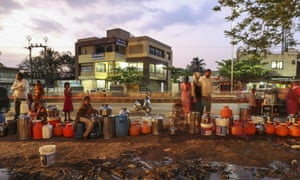Delhi, Gurugram drown yet again; waterlogging gives commuters a hard time
Last updated on: August 31, 2016 12:30 IST
The Delhi Police tweeted about the traffic and poor visibility even as commuters continued to have a hard time as vehicular traffic crawled.
In a series of tweets, the Delhi Traffic Police tweeted: "Water logging on Dr Zakir Hussain Marg, W Point, Loha Mandi to Mayapuri, Gol Dak Khana, Kali Bari Marg, Chirag Delhi to Nehru Place flyover."
"Water logging at Alipur Village, Okhla Underpass, Jasola Red Light, Saket M B Road, Saket Metro Station, Lado Sarai T-Point, PTS Red Light."
"Water logging under Modi Mill Flyover, Sadik Nagar, BRT to Moolchand, Lala Lajpat Rai Marg, Nehru Place to Zamrudpur."
"Water logging on Dr Zakir Hussain Marg, W Point, Loha Mandi to Mayapuri, Gol Dak Khana, Kali Bari Marg, Chirag Delhi to Nehru Place flyover."
Puran Kumar, Jt CP, Gurugram said: If it does not rain heavily, traffic is expected to be normal in the next few hours.
US Secretary of State John Kerry's visit to Sisganj Gurudwara, Jama Masjid and Gauri Shankar temple has been cancelled due to the heavy rains, reported ANI. Kerry is on a three-day visit to India.
On Monday, Kerry and his convoy were stuck in massive traffic near Satya Marg due to waterlogging caused by heavy rains while on his way to the hotel from the IGI airport.
The MET department has said that the NCR region is experiencing moderate thunderstorms which will continue for the next few days.
Roads leading to Gurgaon from Vasant Kunj area are completely jammed due to the rains. More jams are also expected across the capital.
Flight operations have also taken a hit with due to bad weather. All flights are delayed at Delhi's IGI airport with one flight being diverted to Jaipur.
Indigo has tweeted that to & fro flights have been affected and delays are expected.
The weather office has forecast thunderstorm with rain through the day. The minimum temperature was recorded at 26 degrees Celsius at 8.30 am.
The city received 3.9 mm of rainfall in the last 24 hours, an official said.
All Photographs: ANI video grabs

